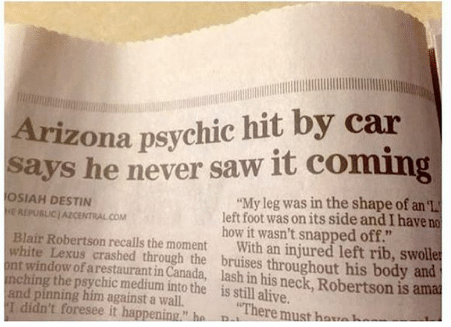Defensive Driving Tip #1: Pay Attention

“I never saw him!” is the most common excuse heard after a collision. Was the other vehicle invisible? Virtually all collisions involve inattention on the part of one or both drivers. Inattention can involve many things, some of which are daydreaming, distractions, sleepiness, fatigue, “highway hypnosis,” talking, etc.
A moving vehicle develops thousands of foot-pounds of energy. YOU as a driver have the responsibility not to use that energy to injure or kill others or damage their property. Paying attention makes it possible for you to see, recognize, and avoid the hazards lurking on the road; these are the three basic elements of defensive driving. The primary attribute necessary for a safe driver is alertness, and paying attention is the most important driving task because it helps create the time you need to recognize hazards and avoid a collision.
One statistic often quoted is that most collisions happen within a short distance from home. Why is this true? Since we mostly drive in our own neighborhoods, the odds are we’ll have most of our mishaps there. Close to home we get more comfortable and perhaps let our guard down (and the other guy does the same thing); you’ve heard that “familiarity breeds contempt?” Better yet, familiarity breeds inattention. We don’t often consider that serious or fatal injuries can occur in low-speed collisions.
I have a challenge for you. While it is important for you to be alert and aware, it isn’t an easy task. The next time you drive, try concentrating solely on the driving task. Think of nothing else. Then see how far you get before your mind wanders. Many drivers won’t even get out of the parking lot! Seasoned drivers don’t HAVE to think about driving much. It’s something we do automatically, and our minds are free to wander. And our minds WANT to wander. Have you ever driven somewhere and been so lost in thought that you couldn’t remember anything about the trip itself? Is this a problem?
Is this a curable problem? Paying attention can become a habit, but you have to work at it. Make conscious, persistent choices NOT to eat while driving, or whatever you do that takes your attention off where your moving vehicle is pointed. Connect your mind to your eyes and work at consciously analyzing what you see while you drive. We call this “situational awareness.” Driving is the most dangerous thing most of us ever do. It deserves your full attention. Mastery of this one habit can almost make you bullet-proof. Not quite, but almost.
